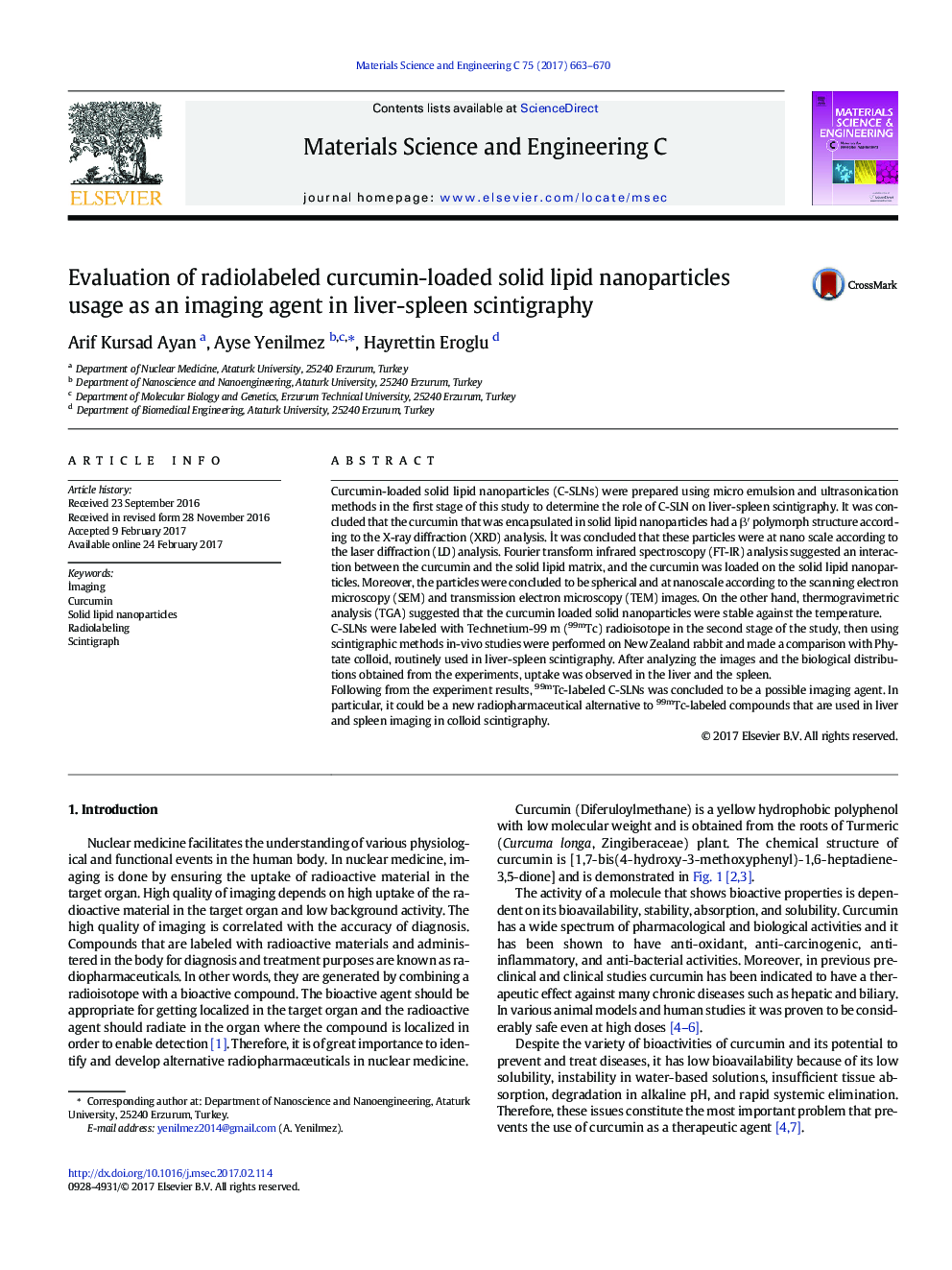| کد مقاله | کد نشریه | سال انتشار | مقاله انگلیسی | نسخه تمام متن |
|---|---|---|---|---|
| 5434869 | 1509146 | 2017 | 8 صفحه PDF | دانلود رایگان |
Hıghlıghts
- Curcumin-loaded solid lipid nanoparticles (C-SLNs) were prepared and examined characterization studies.
- The C-SLNs were labeled with 99mTc and made a comparison with Phytate colloid, routinely used in liver-spleen scintigraphy.
- In vivo studies were performed on experimental rabbits using scintigraphic methods.
- When the obtained images were examined, the uptake was observed in the liver and the spleen.
- C-SLNs labeled with 99mTc could be a selective imaging agent.
Curcumin-loaded solid lipid nanoparticles (C-SLNs) were prepared using micro emulsion and ultrasonication methods in the first stage of this study to determine the role of C-SLN on liver-spleen scintigraphy. It was concluded that the curcumin that was encapsulated in solid lipid nanoparticles had a βⲠpolymorph structure according to the X-ray diffraction (XRD) analysis. İt was concluded that these particles were at nano scale according to the laser diffraction (LD) analysis. Fourier transform infrared spectroscopy (FT-IR) analysis suggested an interaction between the curcumin and the solid lipid matrix, and the curcumin was loaded on the solid lipid nanoparticles. Moreover, the particles were concluded to be spherical and at nanoscale according to the scanning electron microscopy (SEM) and transmission electron microscopy (TEM) images. On the other hand, thermogravimetric analysis (TGA) suggested that the curcumin loaded solid nanoparticles were stable against the temperature.C-SLNs were labeled with Technetium-99 m (99mTc) radioisotope in the second stage of the study, then using scintigraphic methods in-vivo studies were performed on New Zealand rabbit and made a comparison with Phytate colloid, routinely used in liver-spleen scintigraphy. After analyzing the images and the biological distributions obtained from the experiments, uptake was observed in the liver and the spleen.Following from the experiment results, 99mTc-labeled C-SLNs was concluded to be a possible imaging agent. In particular, it could be a new radiopharmaceutical alternative to 99mTc-labeled compounds that are used in liver and spleen imaging in colloid scintigraphy.
Graphıcal abstract101
Journal: Materials Science and Engineering: C - Volume 75, 1 June 2017, Pages 663-670
